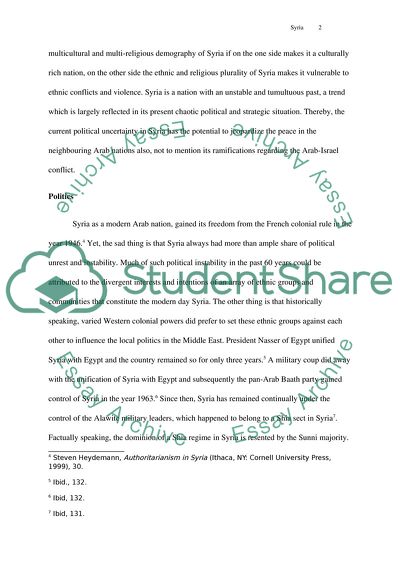Cite this document
(Syrian: Civil War Term Paper Example | Topics and Well Written Essays - 2000 words, n.d.)
Syrian: Civil War Term Paper Example | Topics and Well Written Essays - 2000 words. https://studentshare.org/politics/1836448-syria
Syrian: Civil War Term Paper Example | Topics and Well Written Essays - 2000 words. https://studentshare.org/politics/1836448-syria
(Syrian: Civil War Term Paper Example | Topics and Well Written Essays - 2000 Words)
Syrian: Civil War Term Paper Example | Topics and Well Written Essays - 2000 Words. https://studentshare.org/politics/1836448-syria.
Syrian: Civil War Term Paper Example | Topics and Well Written Essays - 2000 Words. https://studentshare.org/politics/1836448-syria.
“Syrian: Civil War Term Paper Example | Topics and Well Written Essays - 2000 Words”. https://studentshare.org/politics/1836448-syria.


